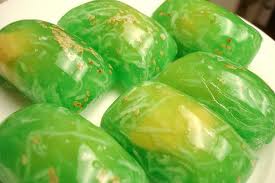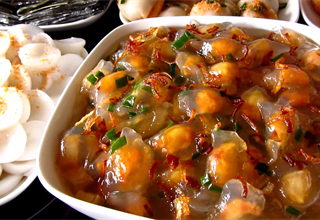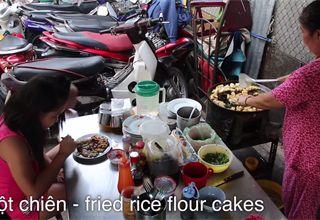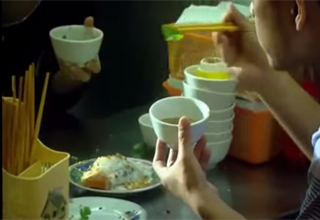(Cinet)- When autumn comes, Hanoians everywhere always remember the special taste of "com" (green sticky rice) which originates from Vong Village. The mid-autumn festival made us memorize a flavor of “Com”.
The early autumn, walking in the area we see sweet growing rice break season alternating with grass smell, smell of home. Village people go round and break the rice for 24 hours to hand in the processing of the paddy seeds to “Com”. Making Com is not simple. Method of communication is always confidential: only the parents transmitted to the son, not to most people for the daughter because when you go get her husband's daughter will bring method to cook the other.
Long, long ago, Vong village in Dich Vong was submerged by floods and was suffering from starvation. One family harvested just a few handfuls of sticky rice which had hardly ripened. Driven by hunger, the family de-husked the grains to calm the stomach. They found it delicious. The experience was passed on to all the villagers and the recipe was transmitted from generation to generation.
Telling about “Com” in Vong village, it is inspired in an old folk song:
“Com of Vong, fragrant rice of Me Tri
Soya sauce of Ban, mint of Lang
What’s better in this world?”
Vong village jealously keeps the secret of the making of its special quality “com”. It is said that in the families the secret of growing the special rice and making “com” was handed down only to daughter-in-law and not to daughters, because the latter might go and live in other villages after their marriages.
Com is made from young glutinous rice, when the rice begins to ripen and still contains milk and fragrance. The village's traditional renowned craft of making com is still well preserved and developed, even with the advance of technology. The local farming industry does not supply enough rice for com; thus during the season, many villagers have to go to other framing areas near the capital to buy young rice. First, the rice is the original green colour.



Com is often eaten by hand, directly from the lotus leaves, a pinch at a time and chewed slowly to fully appreciate the flavour. It can also be eaten with persimmons or bananas or used as the ingredient for banh com (com cake), che com (sugary soup with com), cha com (pie made of pork and com) among which , banh com is the most well-known as it is used at almost every engagement ceremony. These kind of cakes are wrapped squarely with bananas leaves, tied with a red string and stamped on the out side with a Chinese character meaning "double happiness". With these characteristics, “banh com” is believed to be a symbol of a steadfast and eternal love. To those who have ever been engaged in farming, eating com often reminds them of a field of young frapaddy.
In autumn the whole village experiences a complete change in the rhythm of life. Men and women, young and old, give themselves wholly to the making of “com”. Children may make an effiecacious contribution, from the threshing of rice to the pounding of the grains.

















COMMENTS